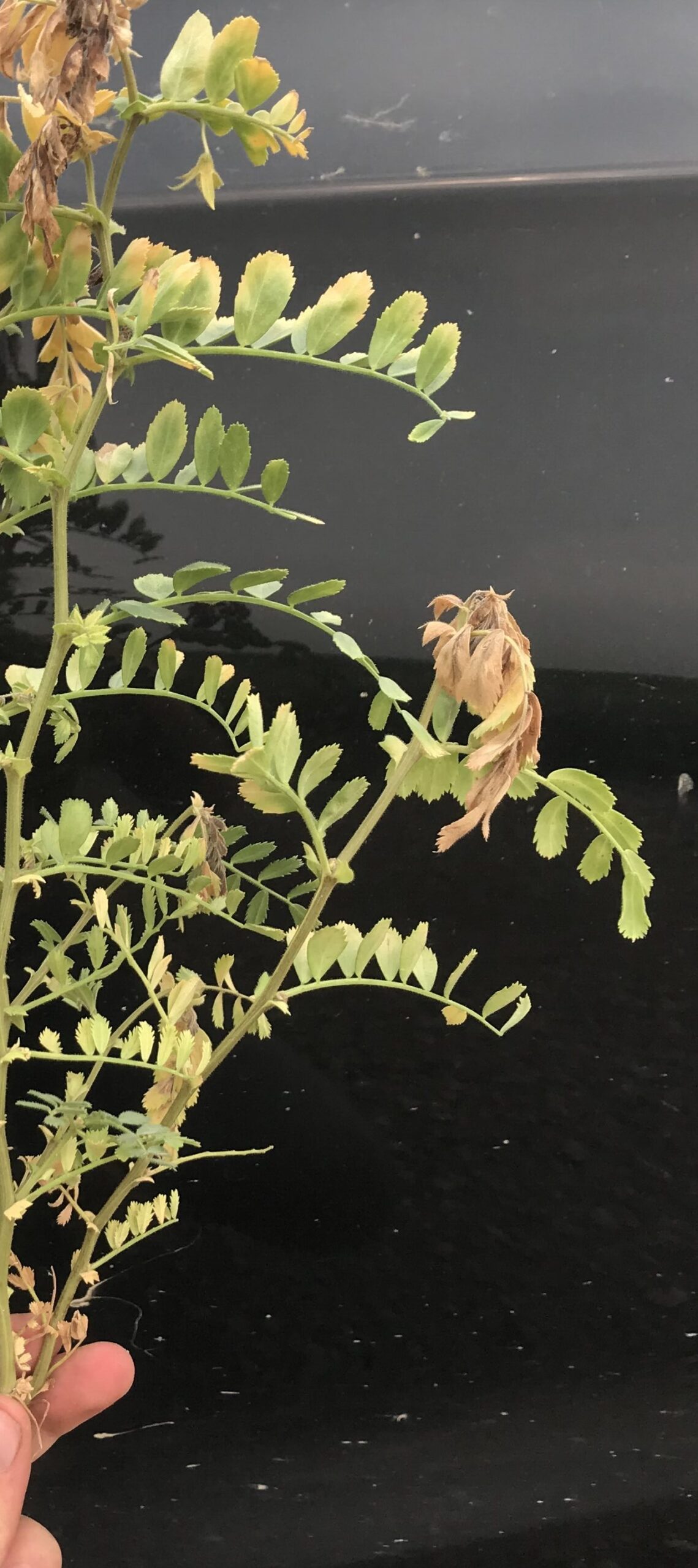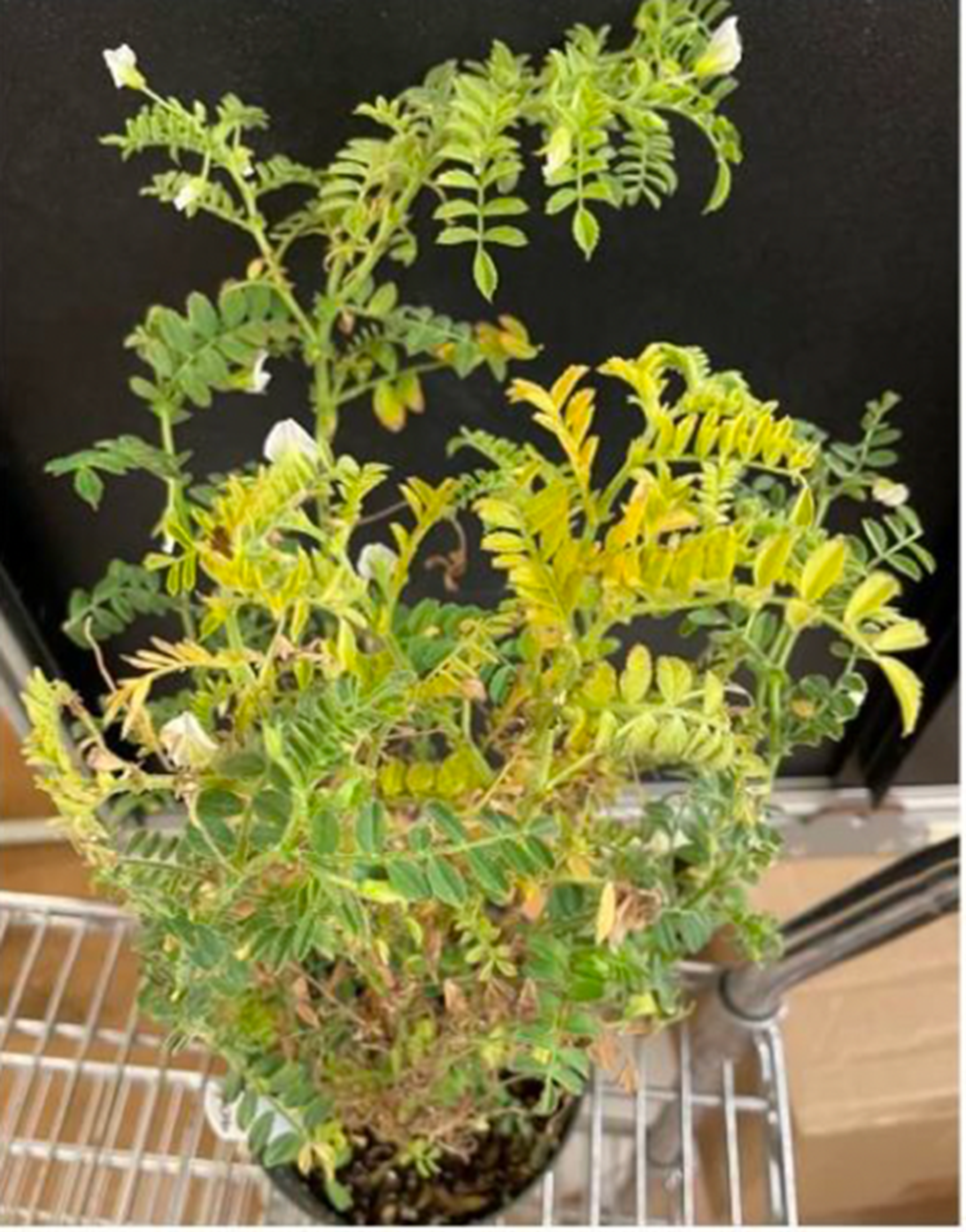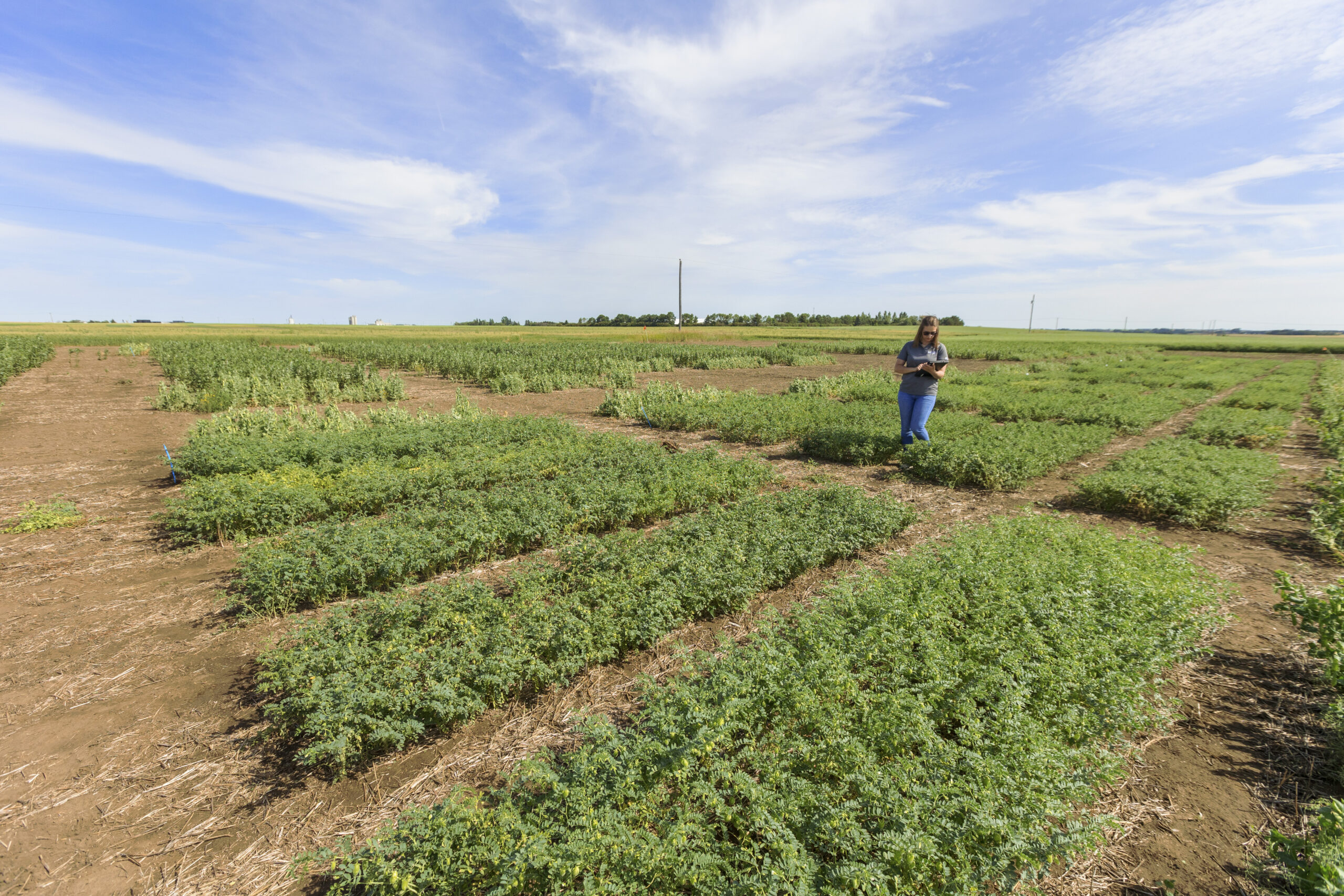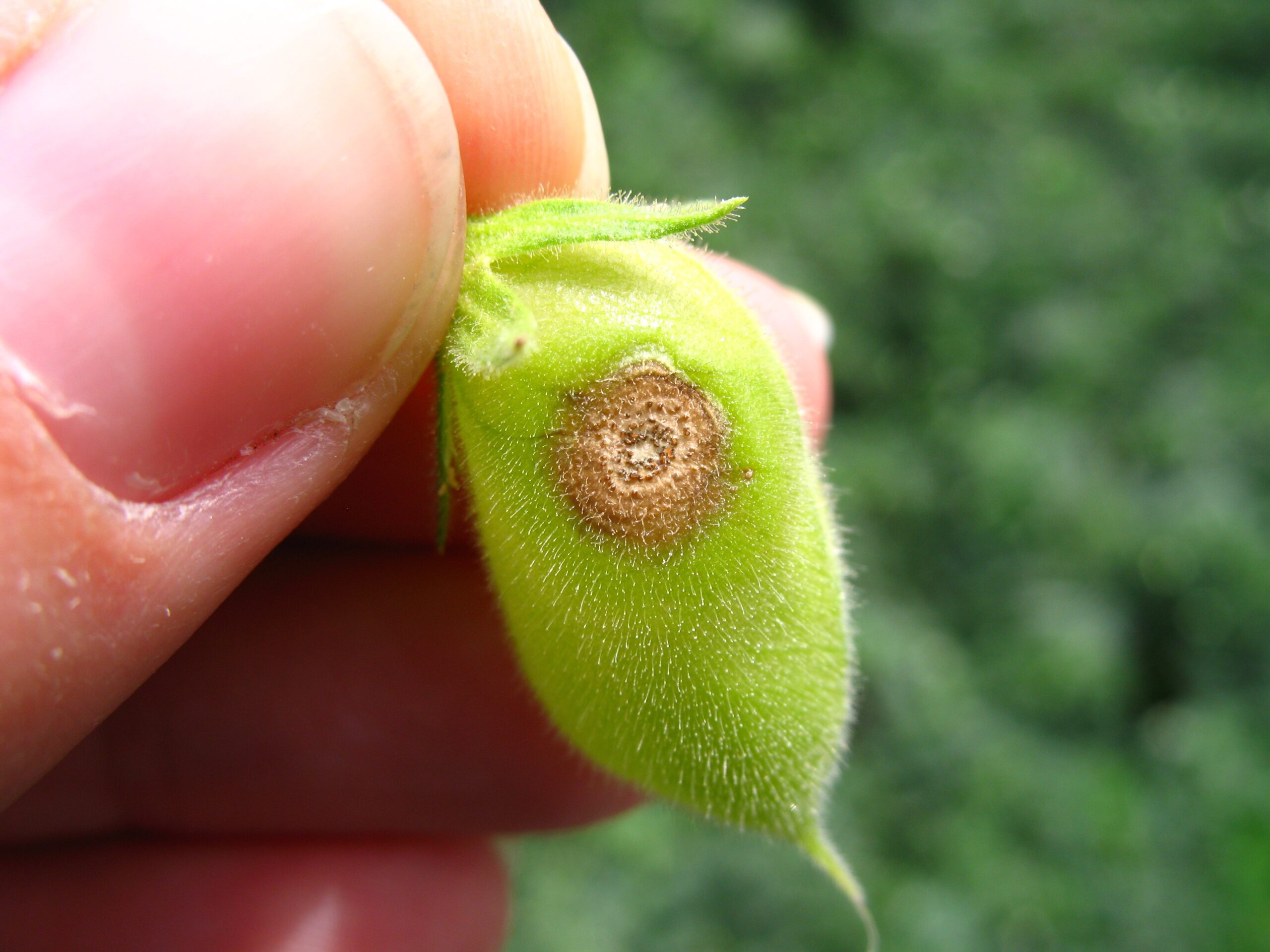The investigation into the emerging health issue in Saskatchewan chickpea crops is an ongoing process. Symptoms of this issue were first reported in southern Saskatchewan chickpea fields during the 2019 growing season and have been observed every year since, with varying severity. While a definitive cause has not been identified, a wide range of evaluations are currently underway to identify the causative factors contributing to the chickpea health issue and better understand its impact on chickpea crops. Two research projects were initiated as part of this ongoing effort to investigate the influence of crop management practices on the onset and progression of this chickpea health issue: one on the impact of herbicides on the development and severity of symptoms, as well as the potential protective effects of potassium chloride (KCl) nutrition, and the other to investigate the use of biostimulants to reduce the severity of the health issue should it emerge.
Results from a 2021 survey indicated that average symptom severity was slightly, and significantly, higher for fields receiving application of metribuzin relative to those that did not. This herbicide, commonly used in chickpea production, can influence plant health and exacerbate health issues. Additionally, the vital role of potassium in water regulation and drought resistance, and the significant factor of chloride application in the success of other dryland crops, were highlighted. Furthermore, the potential of biostimulants to reduce the severity of chickpea health issues, particularly in Saskatchewan, was a beacon of hope. Biostimulants, with their diverse formulations containing beneficial microorganisms, compounds, or substances, have demonstrated a varied ability to bolster plant health, nutrient uptake, and stress tolerance. Given the complexity of the chickpea health issue and the multifaceted nature of biostimulants, investigating their effects on symptom severity, crop stress, and overall plant vigour can provide valuable insights into their potential role as a sustainable management strategy. Moreover, the understanding of the effects of biostimulants, KCl fertilization, and herbicide application can offer integrated solutions for optimizing chickpea production while addressing emerging health concerns, instilling a sense of optimism in the face of these challenges.
Therefore, the two projects aimed to achieve two primary objectives. The first objective was to assess the potential integration of two commonly available products, one a synthetic seed treatment (Apron® Advance) and one a biological seed treatment (Heads Up®), into conventional chickpea production with or without the use of a foliar biostimulant (seaweed extract) to enhance disease resistance, stress tolerance, and yield without sacrificing economic viability. Apron® Advance and Heads Up® are commonly used and registered seed treatments with well-established modes of action. While the application of biostimulants is less studied, a variety of products containing seaweed extracts are available on the market. They are primarily used to reduce plant stress, which is credited to the presence of various compounds in the extracts (sugars, amino acids, and carbohydrates) that can help plants grow, regulate water, and defend themselves.
The second objective was to examine the impact of crop management practices, herbicide application and KCl fertilization, on the emergence and progression of symptoms associated with the newly identified chickpea health issue affecting Saskatchewan chickpea crops.
Both objectives were completed over two field seasons, 2022/23, at Swift Current and Hodgeville, Saskatchewan. For objective one, small plot trials were set up as four-by-three factorial, with 12 treatments in total, in a randomized complete block design with four replicates. Seed sources were CDC Leader (2022) and CDC Lancer (2023). The first factor was seed treatment, with four levels: 1) bare seed (untreated controls), 2) Apron® Advance (synthetic seed treatment), 3) Heads Up (natural product seed treatment), and 4) Apron Advanced and Heads Up®. The second factor was biostimulant, with three levels: 1) the absence of a foliar biostimulant (seaweed extract), 2) seaweed extract applied at the vegetative stage only and 3) seaweed extract applied at the vegetative and reproductive stages. Samples were taken from pre-seed to post-harvest and assessed for baseline soil characteristics, emergence, early vigour, crop stress, leaf disease, root evaluation, yield, test weight, seed size, and an economic analysis evaluating the return on investment.
Objective two followed a similar four-by-two two factorial, eight treatments in a randomized complete blocking design with four replicates using the same chickpea varieties. The first factor was herbicide, with four levels: 1) Pre-seed Edge® only, 2) pre-seed Authority® only, 3) pre-seed Edge®, followed by post-emergence metribuzin and 4) pre-seed Authority®, followed by post-emergence metribuzin. Each treatment was tested with or without potash fertilization, 35 pounds per acre (lbs/ac) KCl application. Endpoint evaluations were the same as objective one but included weed biomass and grain nutrient content.
Both objectives one and two faced challenges, including grasshopper pressure, hail damage, and limited or no disease pressure, which reduced treatment response and limited the conclusions on the applicability of biostimulant use and KCl fertilizer. In objective 1, biostimulant application did not significantly affect any factor investigated. While expected improvements in yield, emergence, vigour, and weed control, likely due to increased crop competition, were observed with seed treatment, foliar biostimulant applications did not improve yield or chickpea health. Overall, while the significance at each location is slightly varied, the effect of seed treatment on plant stand was as follows: Apron® Advance > Apron® Advance/biological seed treatment > biological seed treatment > bare seed.
Chickpea yields were significantly higher in 2022 than in 2023, likely due to hail and grasshopper damage. The hail and grasshopper damage in 2023 likely also accounted for the yield being slightly, but significantly, higher in Swift Current in 2023 compared to Hodgeville. In 2022, although Hodgeville showed higher test weight and better weed control than Swift Current, the two sites did not significantly differ in yield. In objective one, the highest-yielding treatment in 2022 was seed treated with Apron® Advance and Heads Up® with the application of the foliar biostimulant at the vegetative stage. However, seeds treated with synthetic or natural product seed treatment without foliar biostimulant were not significantly different. There was no economic advantage to the foliar application of seaweed extract. Similar results were observed in 2023, with Apron® Advance alone being the most practical and profitable treatment.
In objective two, herbicide use and KCl fertilization were found to influence symptom severity, with a trend for higher severity in treatments receiving metribuzin. Grain nutritional content revealed potential impacts of herbicide and KCl application on the nutritional quality of chickpeas, although specific effects varied on the treatment combinations. The economic analysis demonstrated the highest return per acre varied per year. In 2022, post-emergent metribuzin with both pre-seed herbicides led to better weed control than pre-seed herbicide treatments alone, resulting in significantly higher yield. However, in 2023, the application of metribuzin with both pre-seed herbicides resulted in slightly but significantly increased symptom severity based on visual leaf disease compared to both pre-seed herbicides alone, resulting in a significant decrease in yield. Therefore, in 2023, the highest return per acre was treatments with no post-emergent metribuzin application and no KCl. However, if post-emergent metribuzin was applied, the application of KCl prevented a decrease in yield and resulted in a higher return per acre than without KCl. These results highlight the importance of pre-seed Authority® with post-emergent metribuzin as the highest return per acre. KCl application may or may not be necessary, depending on site conditions.
While the projects did not yield specific conclusions on applying biostimulants and fertilizer towards the Saskatchewan chickpea health issue, the projects did highlight the importance of seed treatments and site conditions. The results from both objectives demonstrated the positive impact of synthetic seed treatments (Apron® Advance) on plant emergence. However, the results were partially soil-dependent, likely due to soil-borne seed and seedling rot. Overall, it is recommended that special attention should be paid to mortality on individual farms to identify potential issues related to seed-borne disease. Growers considering not using a seed treatment should test the emergence potential of untreated chickpea seed in their soil indoors before seeding. Once determined, adjusting seeding rates accordingly can enhance plant stands and ultimately contribute to improved crop health and productivity.



